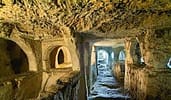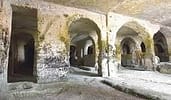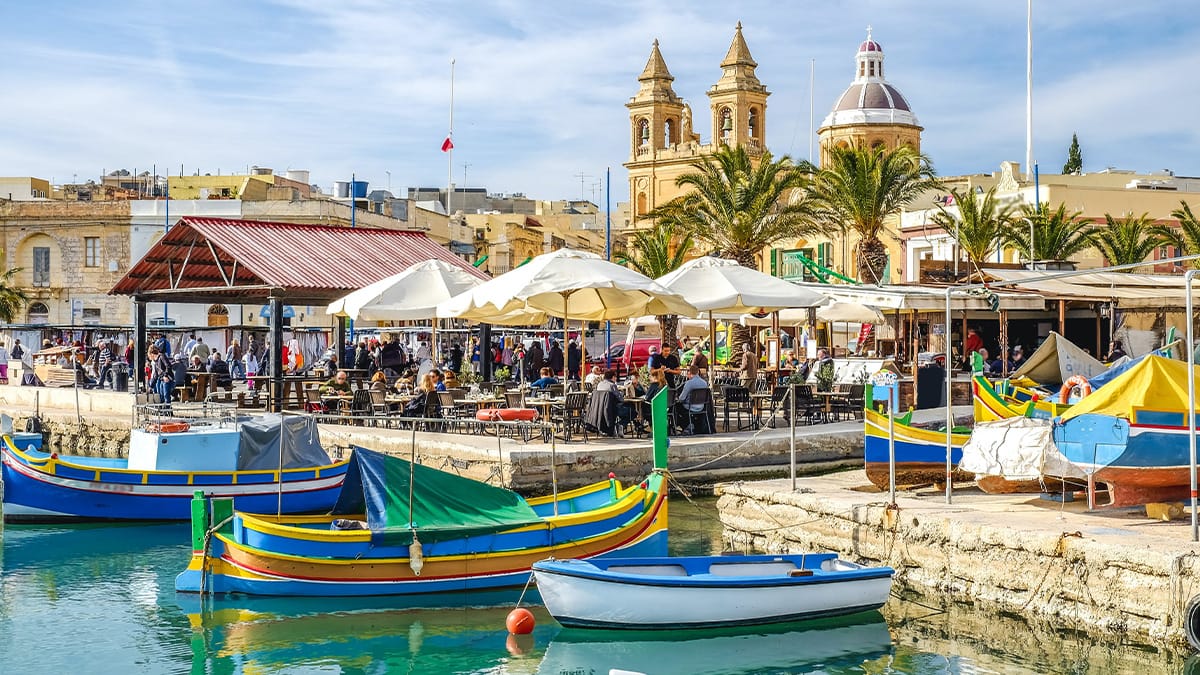Abbatija tad-Dejr is an early Christian site comprising at least four juxtaposed hypogeums. The term ‘Dejr’, which can mean ‘sheepfold’, also has connotations of a convent or monastery, suggesting a rich history for the site. Outside, a rectangular forecourt, originally a quarry, was shaped to house the hypogea. This forecourt was enlarged and partially covered by a colonnade in the 13th century. The largest of the entrances leads into the main complex, including a rectangular corridor which, originally a triclinium hall, was redesigned to be associated with a 13th-century chapel. Remains of frescoes and numerous crosses testify to its use as a Christian oratory.
The 13th century marked significant transformations on the site, notably with the addition of a central apse where once stood a fresco of the Crucifixion, with figures of the Virgin Mary, John and the Archangel Gabriel. This fresco, along with the coat of arms on the main pillar, was transferred a few decades ago for conservation and is now on display at the MUZA in Valletta. Despite these changes, the hypogeum’s main burial area remains intact, comprising canopied tombs arranged in a grid pattern, many of which feature decorations of spirals, fish-scale motifs and palm trees.
The other three hypogeums, although smaller, have also preserved elements of Roman funerary architecture, such as triclines and various types of tombs. These structures reflect the site’s evolution over time, while preserving notable architectural features.



